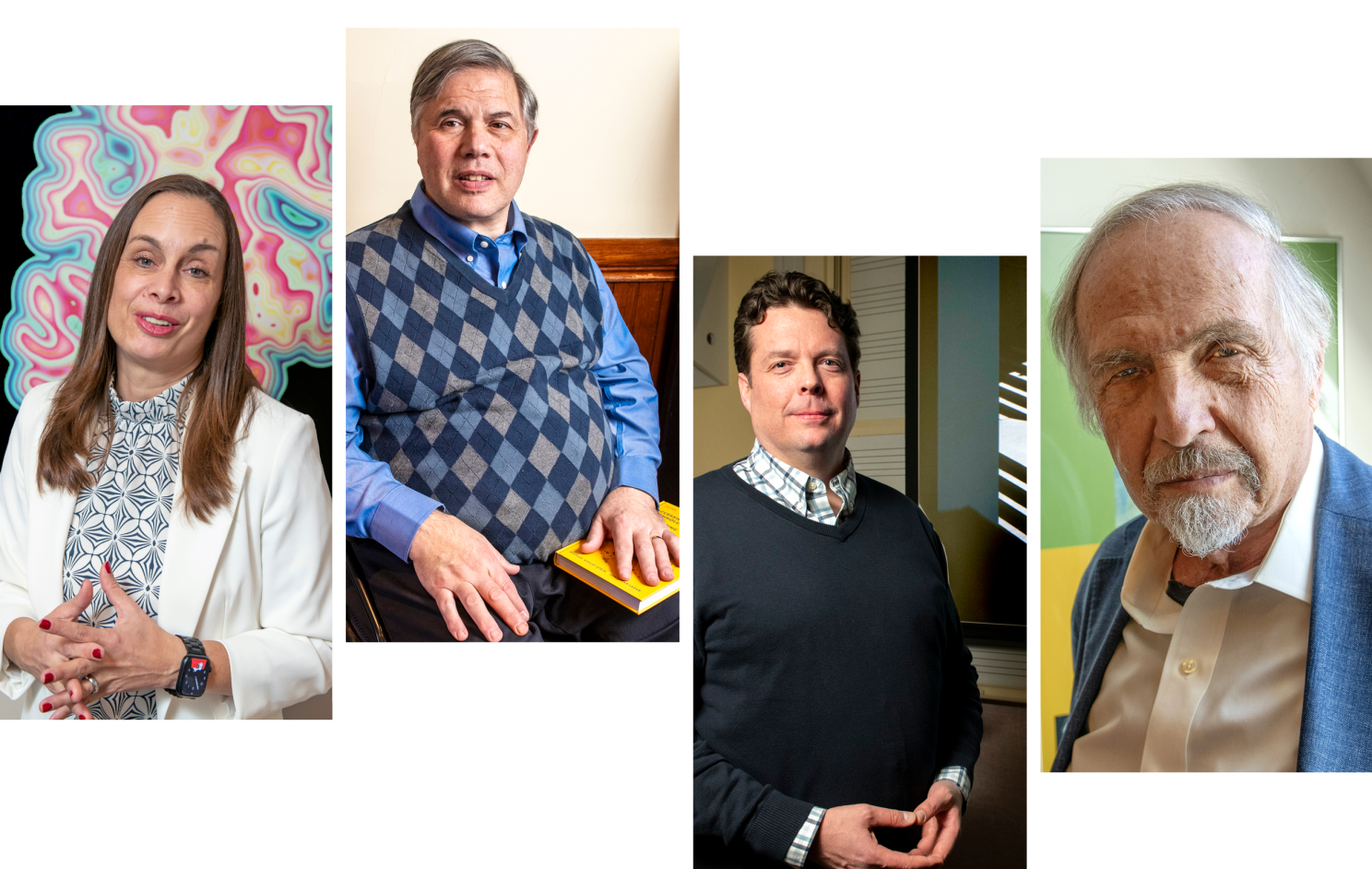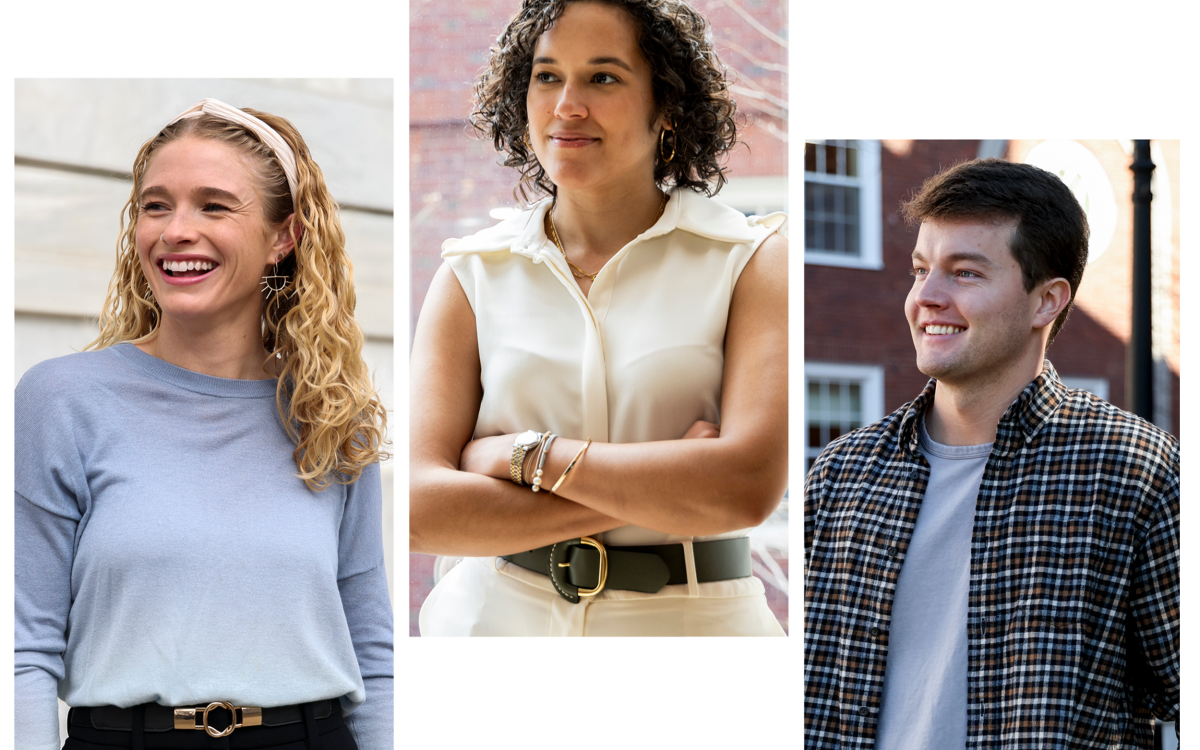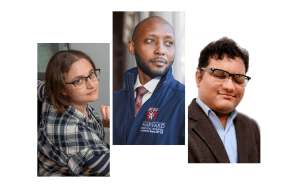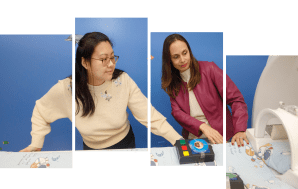Anticipate, accommodate, empower

Nadine Gaab, Michael Ashley Stein, Andrew Clark, Arthur Kleinman.
Photos by Jon Chase/Harvard Staff Photographer; photo illustration by Judy Blomquist/Harvard Staff
How to ensure students with disabilities have an equal chance to succeed?
Second in a four-part series on non-apparent disabilities.
Nearly one in four Americans has a disability, according to the CDC. Many disabilities — such as chronic pain, learning disabilities, diabetes, and depression — are “non-apparent,” or not immediately obvious to others, presenting their own set of challenges.
So how can professors design their classes to give all students an equal chance to succeed?
The Law School’s Michael Ashley Stein — who has taught classes such as “Disability, Human Rights, and Development” at Harvard Law School and “Disability Law and Policy” at Harvard Kennedy School — finds it useful to draw connections across affinity groups.
“People of color might point out racism and women and others might point out sexism. To me, all those prejudices and civil- and human-rights-violating type actions are grouped under ableism,” said the visiting professor and co-founder and executive director at the Law School’s Project on Disability. “It’s important when teaching disability to create those linkages, and to create the kind of affinity and solidarity that reaches across groups.”
A tool favored by Andrew Clark, senior lecturer on music and director of choral activities at Harvard, is the Universal Design for Learning framework geared to different types of learners. It gives students options to demonstrate what they’ve learned.
“I have in the last 10 years been in many settings with students where they’ve talked openly about depression or anxiety, whereas 40 years ago, they would not have talked about it.”
Arthur Kleinman
Clark began teaching “Music and Disability” in the Faculty of Arts and Sciences in 2016. He was inspired by his early years working at a music camp for individuals with disability and chronic illness and a desire to learn more about the intersection between music and disability studies. Students examine musicians or specific works with disability narratives and consider “how disability justice is enacted and embodied.”
“There’s a difference between accommodation and anticipation,” Clark said. “If we can design our classes — as well as extracurricular activities and student life — to anticipate every person rather than to accommodate everyone, that’s true inclusion. That’s making students feel empowered rather than accommodated.”
Nadine Gaab, associate professor at the Harvard Graduate School of Education, who has centered her work on non-apparent disabilities for more than 20 years, uses the messaging platform Slack to offer students multiple ways to communicate, incorporates scholars with disabilities in her syllabus, and has flexible participation and assignment submission policies.
This spring, Gaab is teaching “Children with Learning and Developmental Differences.” Students learn about the challenges faced by children with conditions such as dyslexia, dyscalculia, and dysgraphia, as well as the teachers, administrators, and medical teams working with them.
“We identify a number of different barriers that prevent us from delivering optimal care for children with invisible and visible disabilities,” Gaab said. “We then identify solutions in educational and community settings that could work in response to those challenges.”
Students apply what they’ve learned to real-world community spaces by identifying accessibility problems and proposing solutions — some of which have already been implemented, Gaab noted.
Mental health, particularly among students, is of interest to psychiatrist Arthur Kleinman. The Esther and Sidney Rabb Professor of Anthropology in the FAS, professor of medical anthropology in global health and social medicine, and professor of psychiatry at Harvard Medical School has been teaching for more than 40 years and has noticed marked changes in how students approach mental health issues.
“People are much more open about this,” said Kleinman, who noted that he used to discourage students from disclosing mental health issues because of stigma.
“I have in the last 10 years been in many settings with students where they’ve talked openly about depression or anxiety, whereas 40 years ago, they would not have talked about it. The responses they get today are also very different. They’re very supportive.”
While the professors say the stigma around non-apparent disabilities and mental health are lessening, they also agreed that more can be done to create more inclusive learning and research environments — at Harvard and beyond.
“It’s an extra cognitive load,” explained Gaab. “It’s extra-hard work to fit into a system that’s designed for the average learner. It’s really important to make sure that students recognize that in themselves, and faculty are aware, that it’s not that students are lazy or even ‘stupid.’ They’re really trying hard.”
Resources
- University Disability Resources serves as the central resource for disability-related information, procedures, and services for the Harvard community.
- Students who wish to request accommodations should contact their School’s Local Disability Coordinator.
- The 24/7 mental health support line for students is 617-495-2042. Deaf or hard-of-hearing students can dial 711 to reach a Telecommunications Relay Service in their local area.
- Harvard Law School Project on Disability







